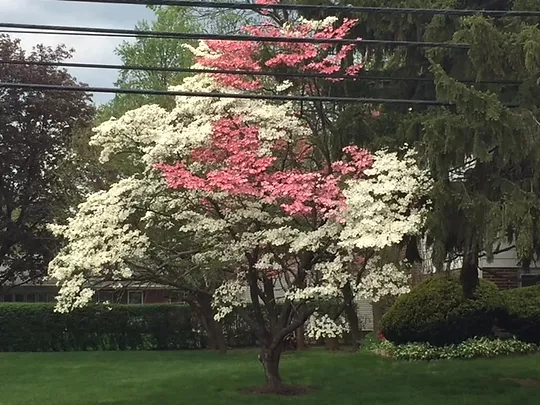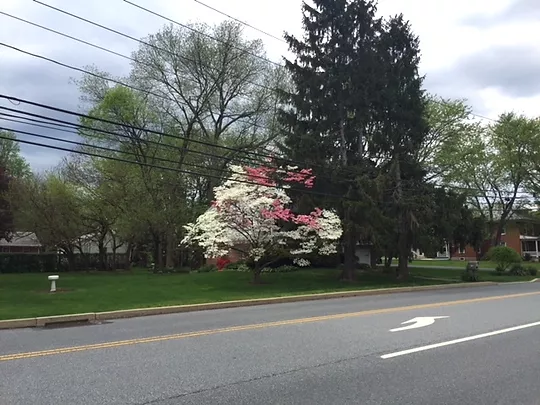
Bicolor dogwoods can be created in different ways. Obviously a person can plant a nursery-bought pink (or red) cultivar in the same hole as a white dogwood to eventually create the appearance of a single, bicolor tree (see entry for the Japanese Maple at Arbor Harbor).
But the more common way: Pink dogwoods can only be propagated by grafting, and they’re invariably grafted onto the root stock of white dogwoods. If a branch emerges below the graft site and is then allowed to grow, it will take on the characteristics of the rootstock (i.e., white dogwood). Meanwhile, the portion of the tree above the graft will be pink. If pruned carefully, both parts will be roughly equal so that the tree is half white and half pink.
It isn’t possible to have a dogwood with pink and white blossoms mixed throughout the tree on the same branches. Instead, each individual branch will be uniformly white or uniformly pink in its entirety.
This amazing species may derive its name from either of two historical uses of the wood and bark: (1) people used to treat dogs with mange by boiling dogwood bark in water and then washing the canine in the resulting broth; (2) in the more likely etymological origin, slender stems of this tree’s hard wood were used for making daggers, and by 1614 the name Dagwood Tree had changed to Dogwood.
